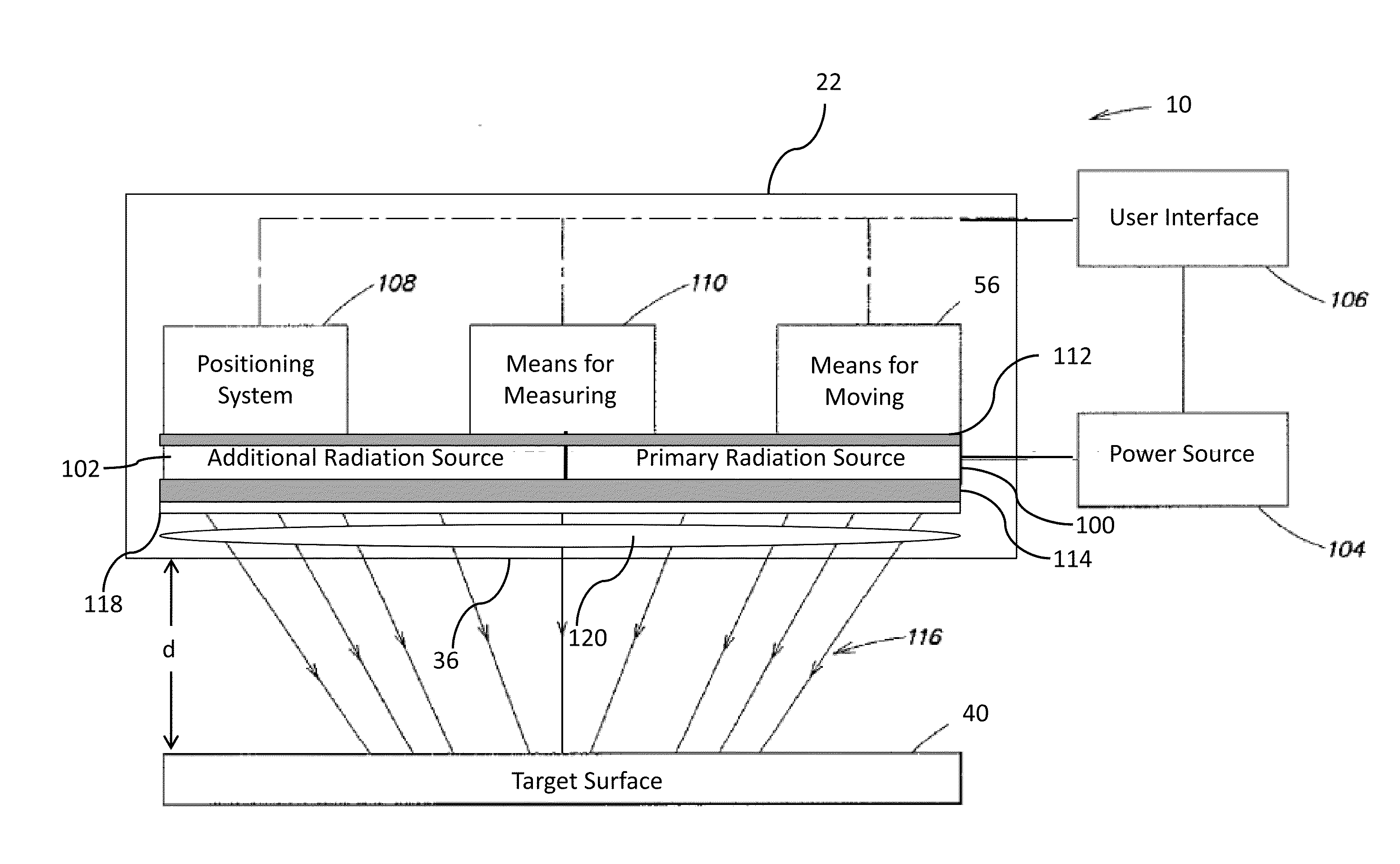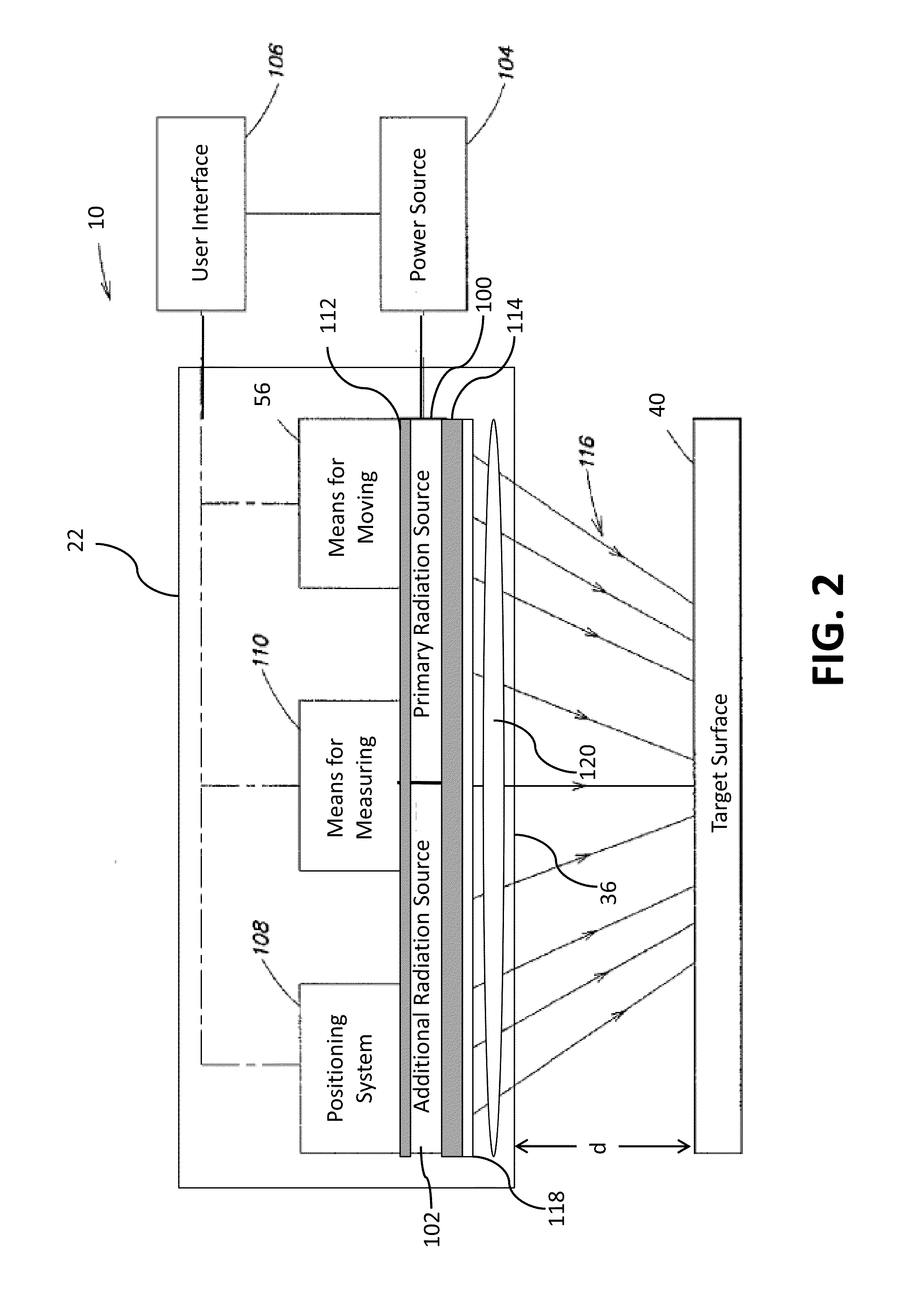Multifunctional Radiation Delivery Apparatus and Method
a multi-functional, flexible technology, applied in the direction of radiation therapy, nuclear engineering, surgery, etc., can solve the problems of short life, toxic materials in xenon and metal halide lamps, and high cost of power supplies and ballasts, so as to achieve fast start-up times, reduce the risk of radiation damage, and reduce the effect of radiation damag
- Summary
- Abstract
- Description
- Claims
- Application Information
AI Technical Summary
Benefits of technology
Problems solved by technology
Method used
Image
Examples
Embodiment Construction
[0020]The following detailed description illustrates the invention by way of example and not by way of limitation. This description will clearly enable one skilled in the art to make and use the invention.
[0021]The present disclosure relates to methods, apparatus, and devices for the controlled application of electromagnetic radiation to a target. Potential uses for embodiments of the present disclosure include, but are not limited to, surface plasmon resonance imaging and therapies, tissue illumination or fluorescence, biological illumination such as to aid in the in vitro growth of cultures, curing systems (e.g. plastics, paint, etc.), plastic molding operations, medical treatments and therapies, and photodynamic therapies. Additional specific medical applications include, but are not limited to, stimulation of new cell growth in wounds, the eradication of pathogenic organisms, and the activation of photosensitive chemicals for the treatment of skin or other cancers. In particular...
PUM
 Login to View More
Login to View More Abstract
Description
Claims
Application Information
 Login to View More
Login to View More - R&D
- Intellectual Property
- Life Sciences
- Materials
- Tech Scout
- Unparalleled Data Quality
- Higher Quality Content
- 60% Fewer Hallucinations
Browse by: Latest US Patents, China's latest patents, Technical Efficacy Thesaurus, Application Domain, Technology Topic, Popular Technical Reports.
© 2025 PatSnap. All rights reserved.Legal|Privacy policy|Modern Slavery Act Transparency Statement|Sitemap|About US| Contact US: help@patsnap.com



